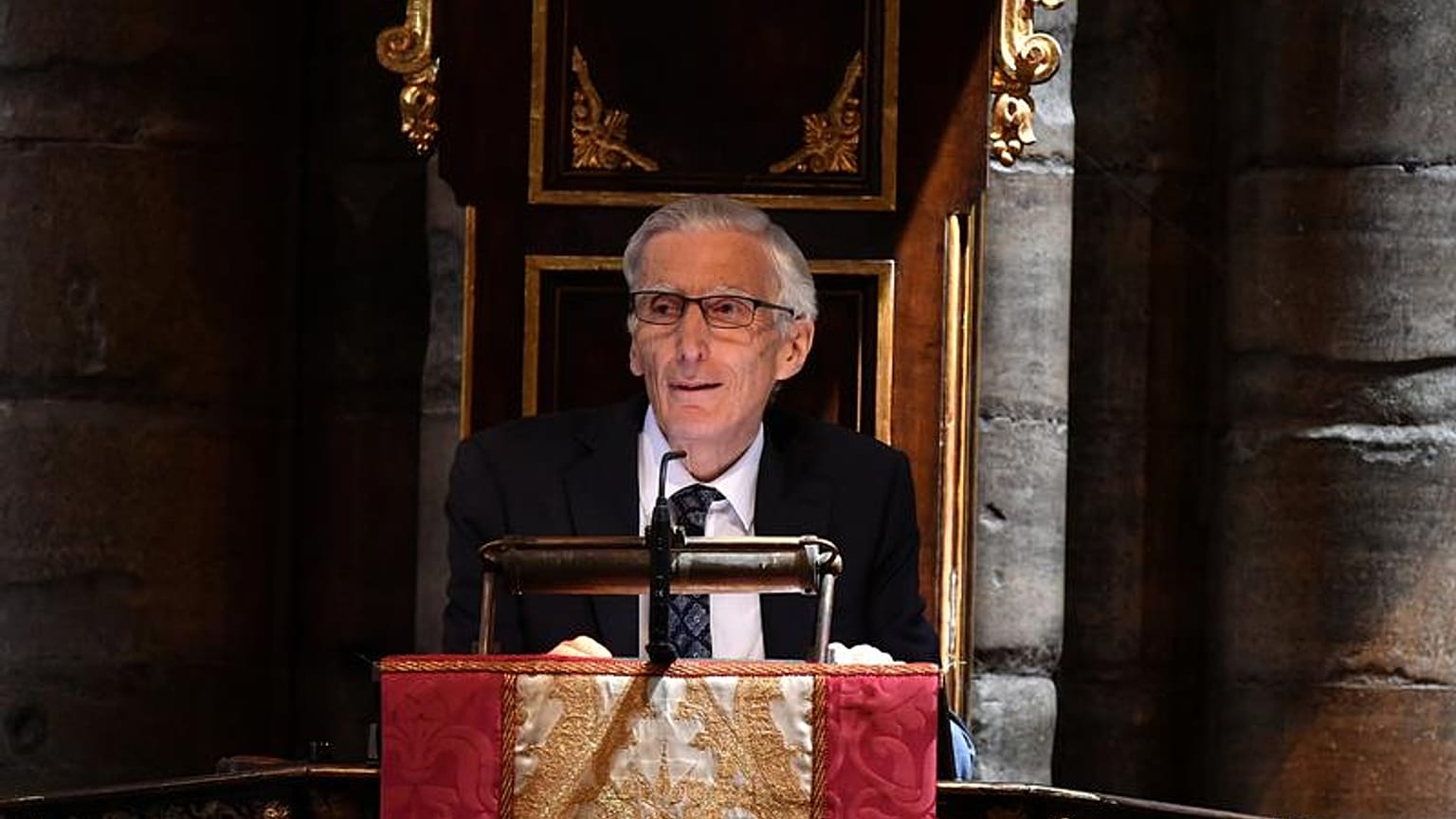Just how real is the risk?
Sir Martin Rees, Britain's dapper astronomer royal, issues a dark warning in his new book, "On the Future." While assessing various threats facing our species, he turns his attention to particle-accelerator experiments designed to probe the laws of nature. "Some physicists raised the possibility that these experiments might do something far worse — destroy the Earth or even the entire universe," he writes.
In one current or future scenario that Rees describes, the particles crashing about inside an accelerator could unleash bits of "strange matter" that shrink Earth into a ball 300 feet across. In another, the experiments could create a microscopic black hole that would inexorably gnaw away at our planet from the inside. In the most extreme scenario Rees describes, a physics mishap could cause space itself to decay into a new form that wipes out everything from here to the farthest star.
These doomsday events are unlikely, Rees concedes, but "given the stakes, they should not be ignored." Is he right to sound the alarm? How serious are the risks, really? With help from leading scientists, NBC News MACH examines the evidence.
A long tradition of worry
Rees follows in a long tradition of experts cautioning that modern technology could lead us to disaster. During the 1945 test of the first atomic bomb, physicist Arthur Comptonworried that the blast might ignite Earth's atmosphere. When the Apollo 11 astronauts returned from the moon in 1969, NASA placed them in quarantine in case they were carrying a deadly space disease.
More relevant to Rees' thesis, a retired nuclear safety officer named Walter Wagner filed a lawsuit in 2008 to block operations of the Large Hadron Collider (LHC), the particle accelerator on the Swiss-French border. He cited concerns similar to those listed by Rees. The U.S. 9th Circuit Court threw out the case, ruling that "speculative fear of future harm does not constitute an injury."
A team of physicists had already evaluated the possibility of a disastrous mishap in 2003, and they returned to the issue in 2008. Both times they found the risks inconsequential. "The LHC is safe, for sure," says Arnaud Marsollier, a spokesman for CERN, the consortium that runs the collider. "There are, every day, cosmic rays [subatomic particles from outer space] with energies far higher than what we will ever be able to produce with a collider. We just do in the lab something that happens in nature all the time, including above our heads in the atmosphere."
A strange way to go
Marsollier means that as a reassurance, but it leads to a related fear: If we humans are incapable of destroying ourselves, could a natural physics disaster do the job instead?
In 1984 two physicists inadvertently stoked such anxieties when they published a theory that ordinary matter could turn into a new substance they dubbed "strange matter," if subjected to enough energy and pressure. Depending on its properties, strange matter might transform everything it touched, eliminating the world as we know it.
Andreas Bauswein, a physicist at the Heidelberg Institute for Theoretical Studies in Germany, is sufficiently intrigued by the idea of strange matter that he is actively hunting for it. Even if he finds convincing evidence, though, he doesn't think strange matter would pose much of a threat. "Earth has existed for billions of years being exposed to highly energetic particles from cosmic rays," he says.
Bauswein thinks the most likely place to find strange matter isn't on this world but on ultra-dense stellar corpses known as neutron stars. Conditions on such objects might be extreme enough to turn them into "strange stars." If two strange stars then happened to collide, Bauswein says, the resulting explosion would have a distinctive appearance.
Science
The Einstein Telescope, a gravitational wave observatory that might be built in the 2020s, could reveal whether there's any basis for the strange theory. "It would precisely provide the sensitivity to say whether a merger involved strange matter or not," Bauswein says. Fortunately, there are no potential strange stars anywhere close to Earth, so we should be nicely out of harm's way.
Verdict: Strange matter is not going to kill us, but it might elucidate the essential nature of matter.
The big suck
Death by black hole seems more likely than death by strange matter, since it's well established that black holes are real. The nearest known black hole lies less than 3,000 light-years from Earth, hardly farther than some of the stars you see at night. Microscopic black holes of the sort Rees describes are another matter. For now, they're only a matter of conjecture.
Starting in 2001, Brown University physicist Greg Landsberg theorized that the LHC might create such micro-black holes. Perverse as it sounds, he was actually hoping for that to happen. "The original thought was that such a black hole will very quickly evaporate," he says. The result would be a distinctive blast of particles that could provide unique information about gravity and how it relates to the other natural forces.
To Landsberg's disappointment, the LHC has found no signs of micro-black holes. "Most likely, the models that predicted them being within the LHC reach are simply not realized in nature," he says. But then he adds a caveat: It's also conceivable that the micro-black holes are there, but we don't understand how to detect them.
The idea that unseen micro-black holes could be floating around may seem unsettling, but Landsberg, too, brushes aside any concerns. "If there was a chance that such a collision would create a black hole that lives long enough to accrete matter around it, we would see an abundance of black holes in the universe far exceeding what we observe," he says.
Verdict: The only way you'd ever get swallowed up by a black hole would be if you made a long trip on an interstellar spacecraft.
Caught in a cosmic breakdown
Strange matter and black holes are nothing compared to a collapse of the vacuum, which would destroy not only our planet but the laws of physics as we know them — the ultimate doomsday. Katie Mack, a physicist at North Carolina State University, has described it as "a quick, clean and efficient way of wiping out the universe."
The idea goes like this: Empty space isn't truly empty but is full of energy associated with the fields and particles that define the universe. If this energy exists in an unstable state (known as a "false vacuum"), Mack explains, then it could abruptly change into a different form.
Vacuum collapse would be like a lake icing over on a winter night. The transformation would begin in one spot and spread until everything was frozen — only in the case of the false vacuum, the thing spreading would not be ice but a new type of space embodying new laws of physics. Once the vacuum began to collapse at some location, the theory goes, the disturbance would travel outward in all directions, destroying everything it touches.
As with strange stars and black holes, any breakdown in the vacuum is probably out of human control. "There's no mechanism we're aware of by which a particle experiment could reach the extreme energies where anything like that could happen," Mack says. Offering some further vague comfort, she notes that "vacuum decay is highly uncertain, as in, we don't know yet if it's even possible."
Rees raises the same idea in his book, citing such uncertainties as reason to proceed with caution in our physics experiments. But if the primary risks come from nature itself — as the physics insiders almost uniformly conclude — then the only way to size them up is by studying them.
In that vein, Mack hopes research at the LHC and its successors will lead to important insights about how the vacuum works and whether it truly could collapse."To me vacuum decay is the most interesting way to go," she says.
One thing for certain: If it does happen, you won't have time to fret about it. Vacuum decay would move at the speed of light, so it would arrive without warning. The moment you see it is also the moment you die.
Verdict: Vacuum decay could strike at any moment. But it hasn't happened in the past 13.7 billion years, so it's unlikely to happen in your lifetime.















